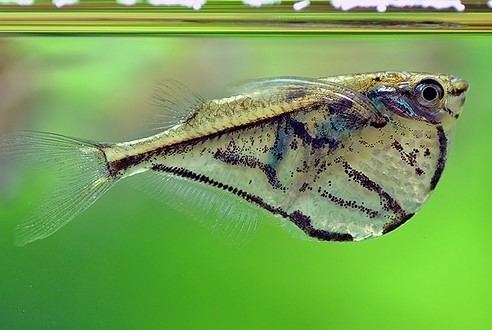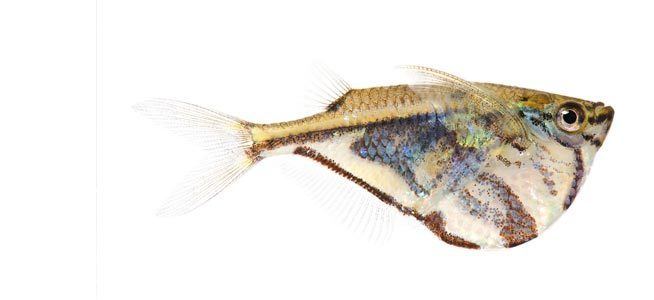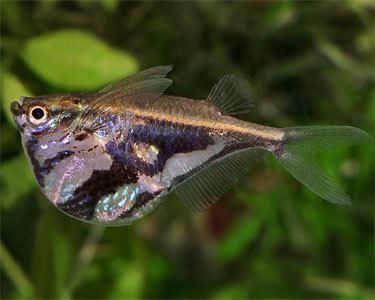Higher classification Carnegiella | Phylum Chordata Family Gasteropelecidae Scientific name Carnegiella strigata Rank Species | |
 | ||
Similar Carnegiella, Freshwater hatchetfish, Pencil fish, Black‑winged hatchetfish, Common hatchetfish | ||
Marbled hatchetfish in my 40b african tank
The marbled hatchetfish (Carnegiella strigata) is a small, normally 3.5 cm (1.4 in) in length, freshwater ray-finned fish native to South America. Hatchet shaped, it presents a gold line extending from its eye to its caudal fin while the area below has a brown and cream colored marble-like pattern (hence its name).
Contents
- Marbled hatchetfish in my 40b african tank
- Marbled hatchetfish carnegiella strigata for sale at tyne valley aquatics
- In the aquarium
- Camouflage
- References
Marbled hatchetfish carnegiella strigata for sale at tyne valley aquatics
In the aquarium

The marbled hatchetfish is common in the aquarium industry. Like most Amazonian fish, the species prefers softer, acidic water. Hatchetfish occupy the top portion of the tank and like many other aquarium species may be shy at feeding times just after they have been introduced. However, given some time and proper water conditions, they will be less chary. As with most characins (see Characidae), they are omnivores. However, they will not swim to the bottom to eat so all food must float. Hatchets have a tendency to be shy fish and are easily intimidated by larger or fast moving fish, so they are only appropriate for very peaceful communities or species tanks. They will also be happier if they don't have to share the top portion of the tank with any other fish and if kept in schools of at least three. They like plants with long trailing leaves to hide under. It is absolutely necessary for tanks inhabited by these beautiful fish to have a tight lid, as they can and will jump when startled. Marbled hatchetfish are egg scatterers and have been bred in the aquarium hobby.
Camouflage

Marbled hatchetfish are adapted to life in the Amazonian rivers as they resemble a dead leaf floating sideways on the surface of a body of water. This camouflage protects them against potential predators that may be lurking in the water. Their marble-like pattern is to give the illusion of rays of light breaking the waters surface and reflecting on the portrayed leaf. The fish itself does not move much, letting the waves and currents move it mostly, but with occasional brief twitching movements. This replicates the way a leaf would be blown around or carried away by the tide or a current. The line running from its eye, to its tail, is believed to replicate the midrib (midvein) of a leaf.
